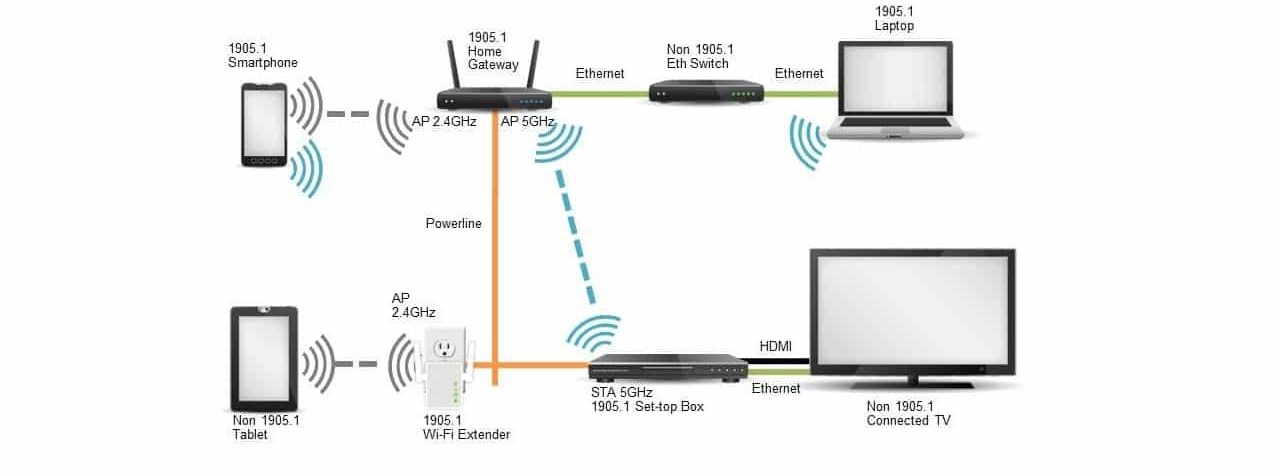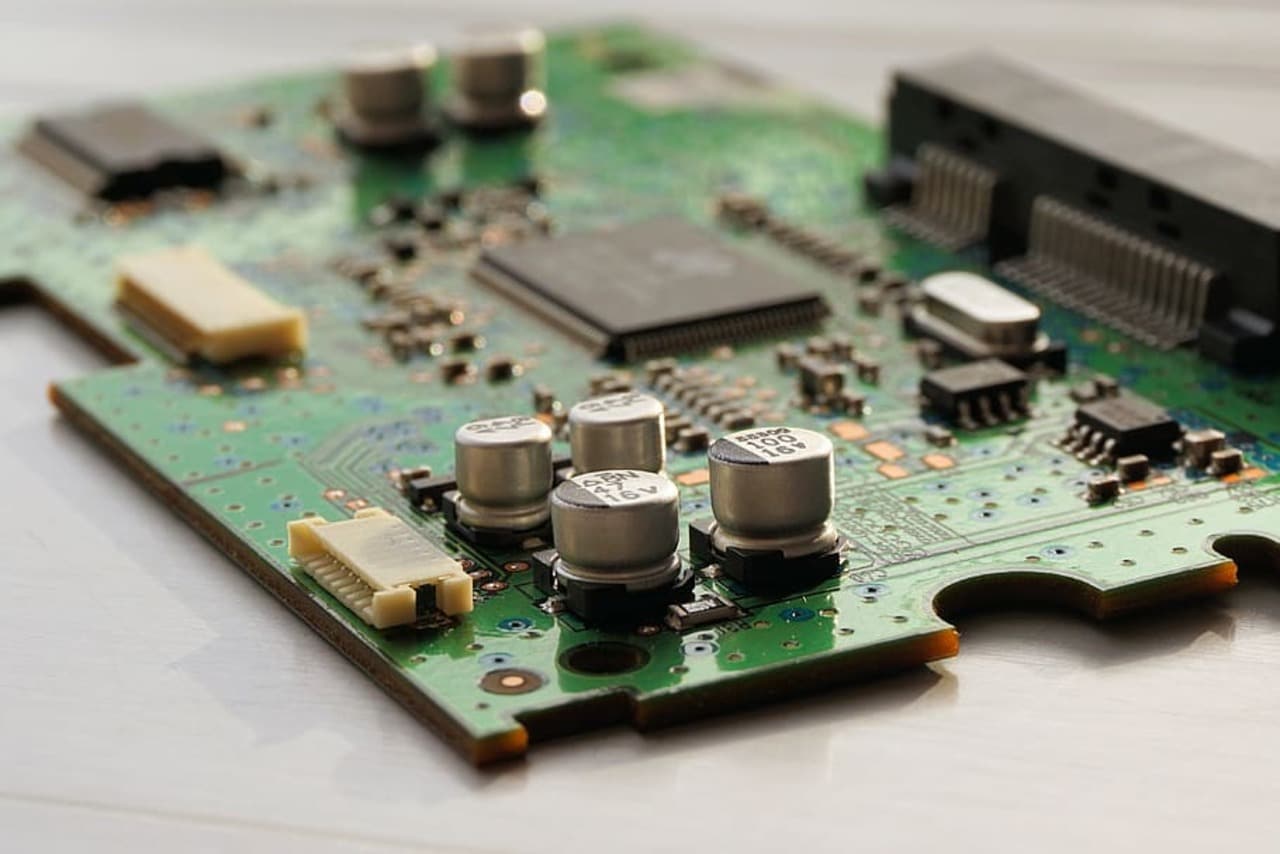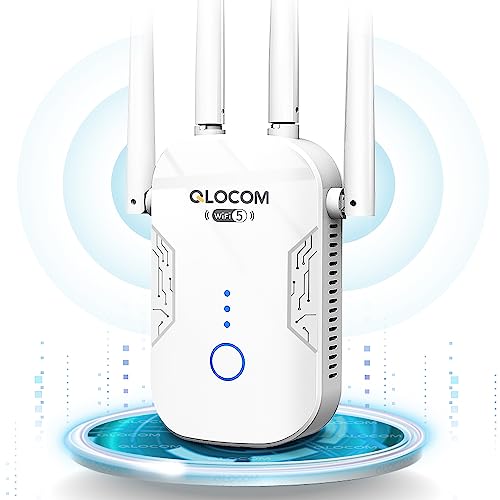Having an Internet connection is especially important, especially in times of pandemic due to online classes and teleworking. Nobody wants dead zones in their home or office where WiFi coverage doesn't reach. In addition, the permeability of the 5Ghz signal has been reduced compared to 2.4Ghz, which has increased this problem. That's why you should know what WiFi amplifiers are and what they can do for you.
With them you can bring the network signal to all spaces where you need it, either to somewhat more remote rooms where it does not now reach from the main router, on other floors of the house, etc. This will guarantee that you have a connection where you really need it and that your speed is not affected by a poor signal ...
Comparison of the best WiFi amplifiers
Here you will see a good selection with some of the best WiFi amplifiers. Selecting a WiFi signal booster From this list you make sure you have a good network device, with good performance, expandability and security.
Netgear Nighthawk X4 AC2200 WiFi Range Extender (EX7300)
- Mesh network repeater ex7300: add Wi-Fi coverage of up to 150 square meters, and connect up to 30 devices to the ...
- Universal mesh wifi functionality: use your existing network ssid name so you never get disconnected ...
Netgear is one of the kings when it comes to professional network devices. Although its price is somewhat more expensive than the rest of the models, its Nighthawk with AC2200 chip is one of the best options you can buy if you want the maximum benefits. A professional, plug-in access point with MU-MIMO support that can be installed in minutes ...
TP-Link AC1750 Wi-Fi Range Extender (RE450)
- AC1750 DUAL BAND WI-FI - With new generation 802.11ac Wi-Fi technology, which is 3 times faster than...
- DOUBLE-BAND ADJUSTABLE ANTENNAS- The 3 external antennas of 3 x 2dBi in 2,4 GHz and 3 x 3 dBi in 5GHz, which increase ...
If you want a WiFi signal amplifier device fast, easy, and that allows you to have a good WiFi coverage, then you can buy this other model. Its price is competitive, offering very good features.
D-Link Wi-Fi Dual Band Range Extender DAP-1610
- It incorporates the WiFi AC standard with a maximum speed of up to 1200 Mbps
- Flip-up external antennas allow for greater coverage, signal strength, and higher data rates
D-Link has another interesting model dualband with AC1200 chip. It offers good performance and four additional connection ports. In terms of speeds, it offers a solid access point for fast 5Ghz signals.
Linksys RE7000 Max-Stream AC1900 + Wi-Fi Range Extender
- AC MU-MIMO WiFi technology provides an uninterrupted connection from the furthest bedroom to the patio ...
- Automatic connection button to establish connection with the router
The price of this Linksys is intermediate, but it offers an extender that is easy to install and with a great performance to use at home, for the most demanding, or at work. In fact, it accepts having several devices connected at the same time with several signal streams using MU-MIMO technology.
TP-Link AC750 WiFi Range Extender RE220
- Three internal antennas: More powerful Dual Band signals, Wi-Fi coverage perfectly amplifies up to areas ...
- Super high speed: Dual band up to 750mbps, 300mbps, 2.4ghz, 433mbps 5ghz
It is one of the WiFi amplifier models cheaper that you can find, and enough for most users who are looking for something practical and without investing too much. It is very simple to install and can provide you with good coverage in your home, with a more than decent performance.
How do WiFi signal boosters work and what are they for?

Una WiFi amplifier antenna, signal repeater, extender, or amplifier, whatever you want to call it, it is nothing more than a network device whose objective is to act as a wireless signal repeater so that it can go further in a LAN.
Basically it is an amplifier of the signal that comes out of the main WiFi router. It acts as a network device more connected to your main router to get a signal from it. But with the difference that it is not to consume bandwidth, but to replicate it on its antennas so that it can reach other nearby points where it had not been able to reach until then.
You must bear in mind that these WiFi amplifiers have a "cost" in performance. Although they are quite fast and allow you to connect at high speed in other points where before the coverage of your main router did not reach, with each jump they take there is a small loss of speed.
In addition, you should not think that they are transformed into routers themselves, but that they are simply serving to amplify the signal, therefore, will depend on the router main station that acts as a base station. Therefore, if for something the latency of the router rises or the connection of it slows down for any reason, it will also be the case in the dependent WiFi amplifier or amplifiers.
And yes, as is deduced from this last paragraph, you could have one or more, depending on your coverage needs. You can even use the signal that comes from one of them as an input for another WiFi amplifier and that this in turn enables another new coverage area and thus get to where you need ...
By exampleImagine that you have the WiFi router in your living room, but that in your room that is on the other side of your house, the signal does not reach or is too low. If you place one of these WiFi amplifiers in an intermediate area, where the signal does reach well, such as the corridor, it will become a signal source and it could reach your room as if you were near the main router ...
Of course, one of the disadvantages The most notable of these devices is that they consume energy and will subtract a plug from your electrical installation that you might need for another task. However, with a power strip or a thief you could solve this problem cheaply and quickly ...
Types of WiFi signal booster
There are several types of WiFi amplifiers, although the most popular are those of plug-in type, that is to say, the connectable or plug. The reason for their popularity is that they are cheaper and their installation / configuration is much easier.
On the other hand, there is another type that is somewhat more powerful, with more advanced configuration options. That can make it a bit more complicated to configure, but it will have similar capabilities to a router. These are the so-called amplifiers desktop with. In this case, they also have Ethernet LAN ports (RJ-45) to connect other devices to them by wire.
What you need to know to choose the right one

In order to choose a good WiFi amplifier you should pay attention to some of its technical characteristics more important:
- Frequency: they are usually DualBand, that is, they accept both 2.4Ghz signal and 5Ghz signal. But make sure that this is the case, since if it were a somewhat older model that only accepts 2.4Ghz and you want to use the maximum 5Ghz speed, it will not be compatible.
- 2.4Ghz: you should know that the network of this frequency is usually slower, but it also has two advantages. One of them is that it is compatible with older devices that cannot link with 5Ghz networks. Therefore, if you have mobile devices, computers, TVs, etc., something older than 2.4 guarantees compatibility. Another advantage is that it is more permeable than that of higher frequencies, that is, it will go further and will not be absorbed in the same way as 5Ghz when it runs into an obstacle such as a wall, a water tank, etc.
- 5Ghz: the clear advantage of this network is its performance, since you will get a speed boost in compatible modern devices. However, not all of them are, and it can be more affected if you are in an area with many obstacles, especially in older houses with very thick stone or brick walls. In addition, the coverage range will be somewhat lower than 2.4 ...
- Compatibility: The IEEE 802.11 standard it is also important. It should at least support a / b / g / n signals, although some newer ones have included ac as well, which is highly recommended. This will depend on the type of router you have, check the router standard to buy a matching amplifier.
- Profile: as I said you have them type plug-in or desktop. Everything will depend on your needs. Plug-ins are cheaper and are usually easier to configure. If you want extra features you can opt for the desktop, as I mentioned above.
- Antennas: Whichever you choose, make sure it has at least two internal buil-in antennas. The better the more antennas you have, since you will be able to capture and emit the signal in a much more efficient way. Some devices include external antennas, something that is preferable, since they usually have a little more power than the internal ones.
- Security: It is a very important point, although most of the models that you will find support WPA2-PSK, which is the most secure system that has spread throughout the market. You should always avoid WPA and WPS, which are less robust systems. Although there is WP3, as you know it has not been extended in terms of device support, therefore, do not be obsessed with looking for devices with this degree of security.
- Trademarks: The brand is important to choose a quality device, but most models of TP-Link, Nextgear, Amper, D-Link, ASUS, etc, are good.
- Ports: In general, plug-in types do not usually include additional ports for wired connection. But if you need to connect a network printer or other devices by cabling, you should opt for a model with RJ-45 ports.
- chipsetAlthough the brands of WiFi amplifiers are very diverse, the chipsets they have inside are usually manufactured by manufacturers such as Qualcomm, Marvell, Intel, CISCO, Broadcom, etc. In addition, depending on the chip, it will accept one or other speeds and standards. For example, you have:
- AC1200 - Dual 802.11 up to 1167Mbps
- AC1750 - Dual 802.11 up to 1750Mbps (450Mbps in 2.4GHz and 1300Mbps in 5GHz)
- AC1900 - Dual 802.11 up to 1900Mbps
- AC2200 - Dual 802.11 up to 2200Mbps
How to install a WiFi amplifier?
If you wonder about how to connect the WiFi booster, do not worry. It is quite simple and you will not need advanced network knowledge to do the installation and configuration.
The first thing you should know is the distance at which you should install the WiFi amplifier. Note that most commercial home amplifiers have a 25 meter reach, although there are long distance ones that can reach 100 meters. Therefore, it should not be more than 25 meters from the point where you want to take the WiFi signal to where your main router does not reach now.
That does not mean that you have to install it right in that room or area where the signal does not reach now, since that way the amplifier will not receive the signal from the router and it will not help. As I have commented in the previous section, you must treat the WiFi amplifier as another network device, therefore, you have to install it in a socket area where the signal does arrive but that it is not more than 25 meters from where you want to carry the signal.
The ideal would be to analyze the area using software to generate a Wifi heat map, that is, to measure the strength of the wireless signal in each area of your home or office. That way you can determine the most optical point for your installation and analyze that it meets the objective you wanted. But few people bother with that.
Once you have decided the area where you are going to put your WiFi amplifier, its installation is really simple. You will only have to follow the steps shown in the manual by each manufacturer, since there could be a difference between the configuration from one model to another. In general, a configuration is done using the WPS button on your router (if supported), or through the web-based configuration of the device ...
The generic stepsAlthough I recommend that you read the instructions for your particular model in case there is any variation, they are:
- With WPS button:
- Connect the amplifier to a socket near your router (it does not matter if you are going to connect it to a different one later, it is only to configure it).
- Wait until the LED of the WiFi repeater flashes.
- Now press the WPS button on the main router for a few seconds and then do the same on the amplifier for 10 seconds.
- Wait some minutes2-3 min, until the WiFi booster links to the router automatically and starts flashing.
- Now you can change it plug and connect it in the place where you are going to leave it.
- With the web interface:
- Connect the WiFi booster to a socket.
- From the mobile you can select the wireless network that this new amplifier emits. It should appear among the available network connections.
- Now access a websites anyone from your favorite web browser and it will open the configuration page.
- Follow the steps of the wizard website that shows you and enters the password of your WiFi router when it asks for it. Use the same mainnet names and voila.
- Now you can change it plug if you want.
Brands that the WiFi booster works with

Tu WiFi booster does not have an ISP (Internet Service Provider) predefined, as in the case of some routers used by certain companies or certain mobile phones. To put it in an easy to understand way, these WiFi signal amplifiers are free, so they can work with a multitude of different operators: Vodafone, Movistar, Orange, etc.
They are also not compatible with specific devices or routers of a specific brand, such as Xiaomi, D-Link, ASUS, TP-Link etc. They can work with all kinds of wireless routers or modems. They just have to operate with the type of WiFi supported. For example, most of these devices support IEEE 802.11 a / b / g / n / ac, so you won't have any problems ...
Where to buy a WiFi amplifier: main stores

Finding a WiFi booster is not complicated at all, and most of them they have quite cheap prices. Therefore, they are a great option compared to other ways of amplifying the WiFi signal, such as changing the main router for a more powerful one, buying a neutral router, or PLCs.
You just have to look in the right place, such as specialized electronics / computer stores or department stores. For example, they highlight stores on the table:
- Amazon: the great online platform is one of the best points of sale where you can find this type of WiFi amplifier. Not only because it has good prices and some offers, but there are also many brands and models to choose from. And all with the guarantee of buying in a place of trust, and with a fast delivery service.
- MediaMarkt: In the famous chain of German technology stores you can also find some brands and models of WiFi signal booster. Its prices are quite competitive, and you can choose both the online purchase method and also buy it directly at your nearest point of sale if you do not want to wait.
- El Corte Ingles: another of the places where you can find some models of this type of network device. The Spanish chain does not have the best prices, but they do make good offers such as Technoprices that you can take advantage of to buy cheaper both online and in physical store.
- Carrefour: This other large surface also has some amp models in its technology section. In the French chain, as in others, you can buy from its website or from one of its shopping centers. Their prices are not bad at all, but you will not find the variety that you can find on Amazon or similar.










